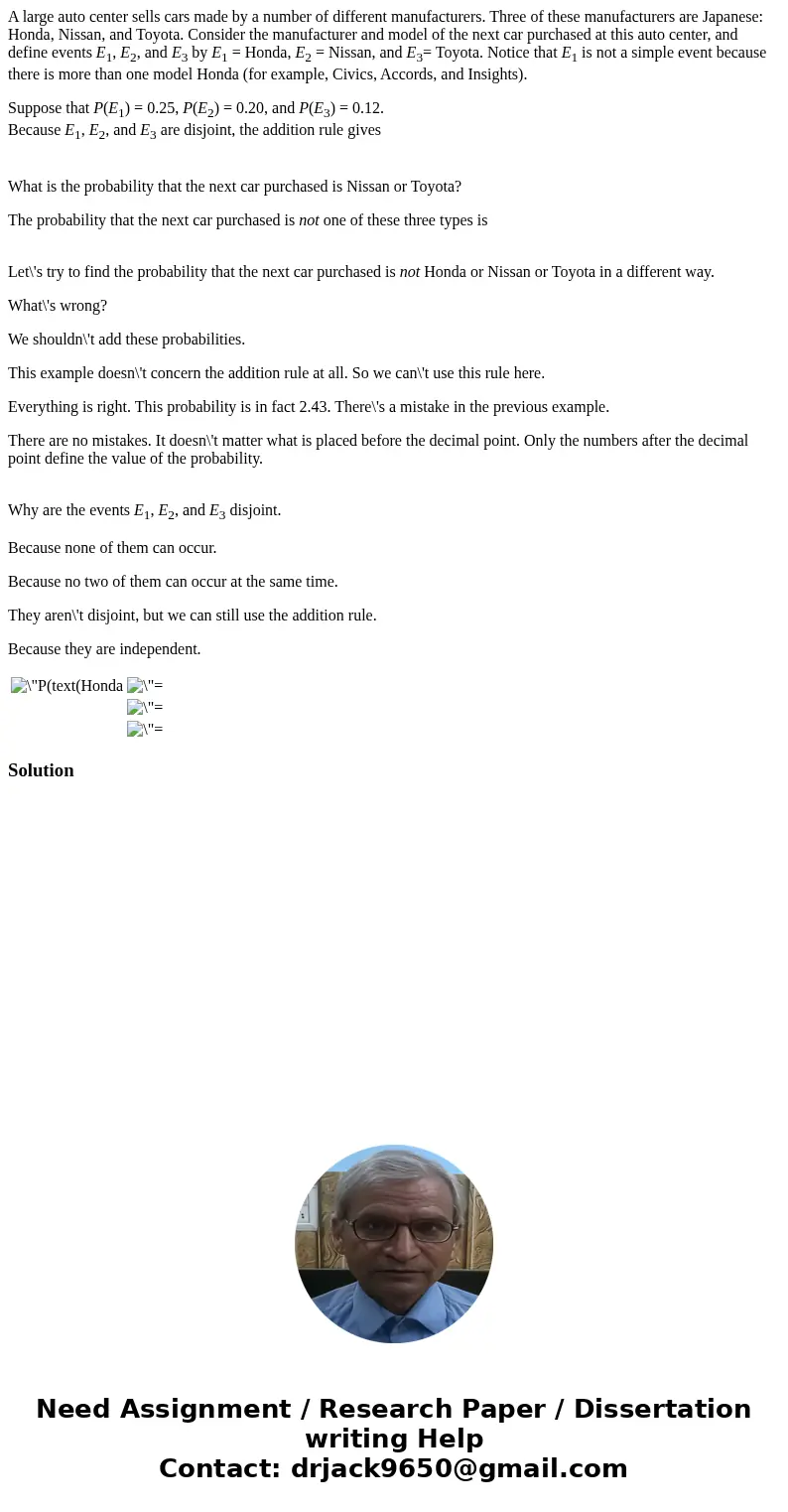A large auto center sells cars made by a number of different
A large auto center sells cars made by a number of different manufacturers. Three of these manufacturers are Japanese: Honda, Nissan, and Toyota. Consider the manufacturer and model of the next car purchased at this auto center, and define events E1, E2, and E3 by E1 = Honda, E2 = Nissan, and E3= Toyota. Notice that E1 is not a simple event because there is more than one model Honda (for example, Civics, Accords, and Insights).
Suppose that P(E1) = 0.25, P(E2) = 0.20, and P(E3) = 0.12.
Because E1, E2, and E3 are disjoint, the addition rule gives
What is the probability that the next car purchased is Nissan or Toyota?
The probability that the next car purchased is not one of these three types is
Let\'s try to find the probability that the next car purchased is not Honda or Nissan or Toyota in a different way.
What\'s wrong?
We shouldn\'t add these probabilities.
This example doesn\'t concern the addition rule at all. So we can\'t use this rule here.
Everything is right. This probability is in fact 2.43. There\'s a mistake in the previous example.
There are no mistakes. It doesn\'t matter what is placed before the decimal point. Only the numbers after the decimal point define the value of the probability.
Why are the events E1, E2, and E3 disjoint.
Because none of them can occur.
Because no two of them can occur at the same time.
They aren\'t disjoint, but we can still use the addition rule.
Because they are independent.
Solution

 Homework Sourse
Homework Sourse